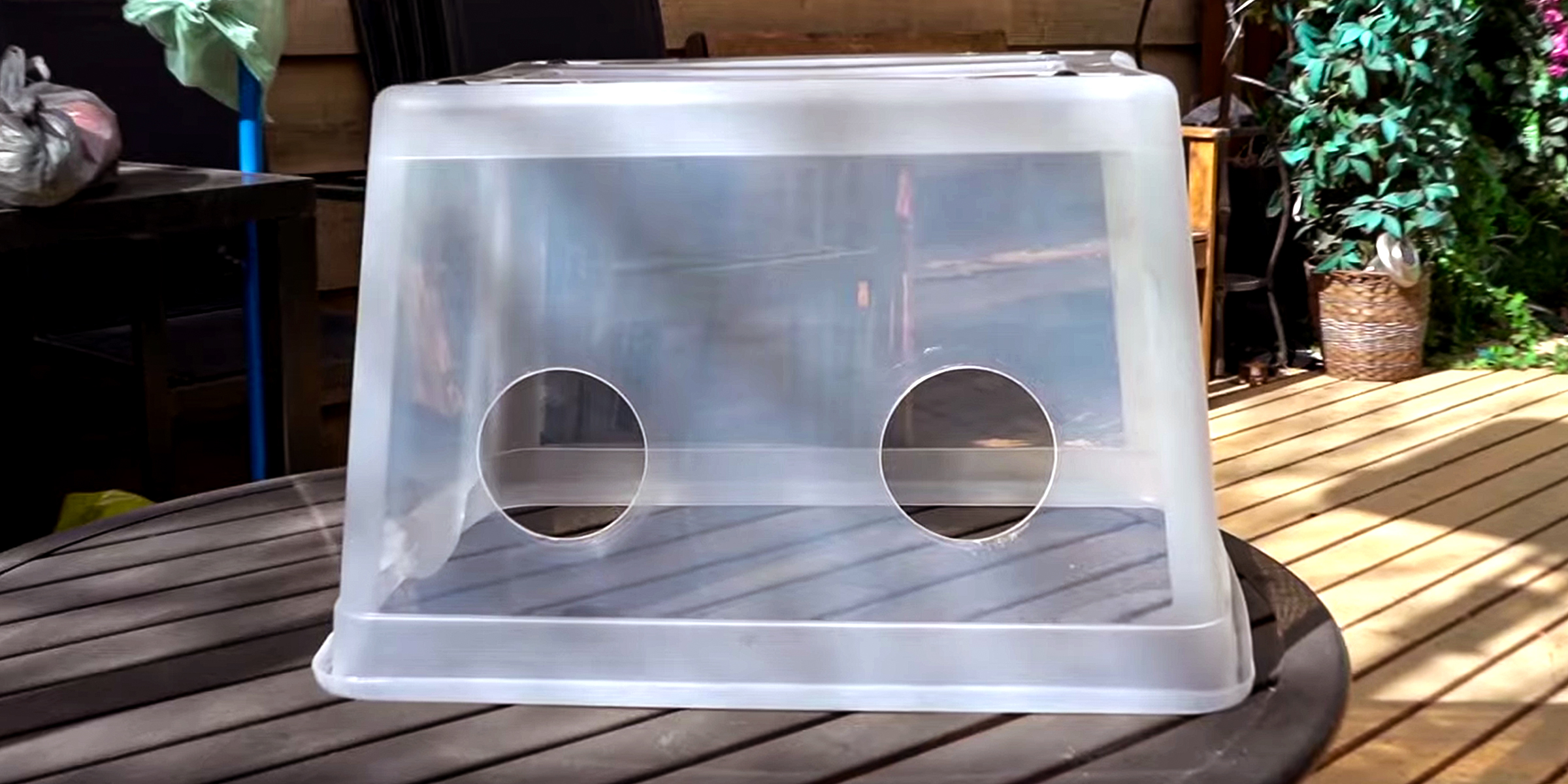
Build a Still Air Box DIY Style with These Easy Steps

If you're a mycology expert or enthusiast, you probably know the importance of a still air box in your work. However, if you're opposed to buying one, here's how to build a still air box DIY-style.
A still air box is typically a clear box-shaped container with two openings where a user inserts their arms. It is built to restrict airflow, preventing airborne contaminants like spores and bacteria from entering.
It's a vital tool for mycologists (biologists who study fungi) and mycology enthusiasts when working and experimenting with the fungi kingdom, from grain spawn to agar cultures.
A still air box may not be a foolproof solution for protecting sensitive mycological projects, but it's effective when well sterilized (regularly, too). If you'd rather make one than buy one, then follow these steps to craft your own still air box DIY-style.
DIY Still Air Box
What You'll Need:
- 70+ quarts clear tote container
- drill
- sandpaper/deburring tool
- gloves, long enough to reach across the tote's width
- 2 male and 2 female ABS adapters, big enough to allow your arms through
- plastic epoxy
- cotton buds
- foam weather stripping
- marker
- silicon sealant
- duct tape
What to Do:
1. Determine the desired center mark of your armholes and mark it in front of your tote container.

Mark the center point of your armholes. | Source: YouTube/Fresno Mycology Society
2. Line your male ABS adapters relative to the center point and trace the inner diameter of the side that will go through the hole with your marker. Ensure the holes are symmetrically aligned.

Trace the diameter of your holes. | Source: YouTube/Fresno Mycology Society
3. Drill your holes with a small circular blade. Ensure you take your time.

Drill your holes. | Source: YouTube/Fresno Mycology Society
Note: Alternatively, if you can find a tin with a suitable diameter for your armholes, heat the metal edge of the tin and melt it through the holes you've marked on your tote container.
4. Use sandpaper (or a deburring tool) to smoothen the edges of the holes.

Smoothen the edges of your holes. | Source: YouTube/Fresno Mycology Society
5. Insert your male ABS adapters into the holes from the outside and secure them with the female adapters on the inside.

Attach your ABS adapters | Source: YouTube/Fresno Mycology Society
6. Apply plastic epoxy with a cotton bud around the edges of the male adapters from the surface of the container to keep them from rotating or moving.

Apply plastic epoxy with a cotton bud around the outer edges. | Source: YouTube/Fresno Mycology Society
7. Apply a silicon ring around the edges of the female adapter from the surface of the container for extra security from airborne contaminants.

Appky a silicon ring around the inner edges of the adapter. | Source: YouTube/Fresno Mycology Society
8. Attach the gloves to the female adapters on the inside and secure them with black tape and a silicon ring.

Secure the gloves with duct tape and a silicon ring. | Source: YouTube/Fresno Mycology Society
9. Line the foam weather stripping along the edge of the container's lid for extra protection from airborne contaminants.
And there you have it. Your completed DIY still air box is ready for use. That wasn't so hard, was it? And since you've already caught the do-it-yourself bug, why not move on to making a DIY Shibumi shade?